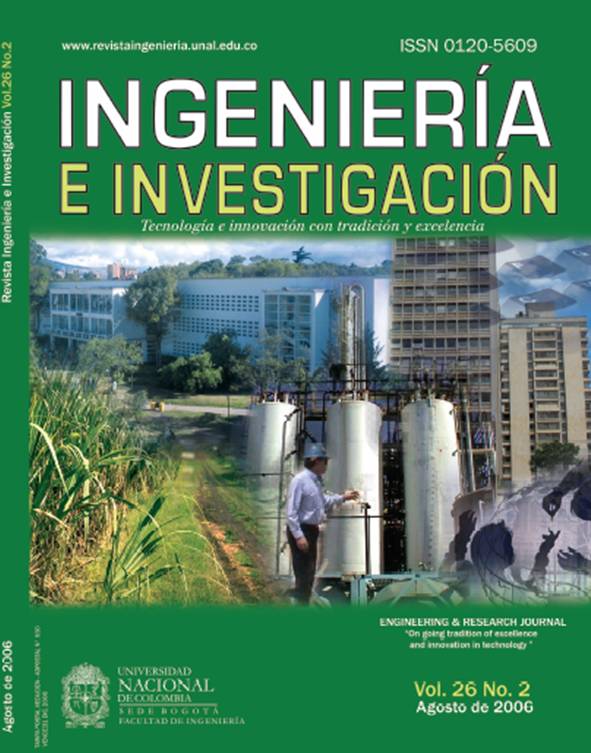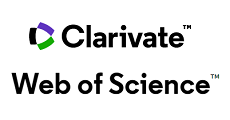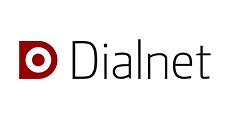Technological innovation: rather than a successful project. Regarding the national prize for innovation
La innovación tecnológica: más que un proyecto exitoso. A propósito del premio nacional de la innovación
DOI:
https://doi.org/10.15446/ing.investig.v26n2.14740Keywords:
innovation, companies, complexity, organisations (en)innovación, empresas, complelidad, organizaciones (es)
Downloads
This article presents the results of the Colombian Ministry of Industry, Trade and Turism’s Premio Colombiano a la Innovación Tecnológica Empresarial para las MIPYMES-2005 (the Colombian prize for Company Technological Innovation for Small- and Medium-sized Companies, 2005). The model used is a Visión Hiper 666 application developed by the author, who was also the scientific and technical director for the aforementioned prize. The innovatory concept was proposed by the Universidad Nacional de Colombia’s “Complexus” research group. The method applied tried to balance quantitative evaluation (scores) with qualitative criteria showing the interrelationships constructed by a company within itself with those outside it and its projected aims for introducing innovation. This article also seeks to explain common (average-based) elements found in small- and medium-sized companies for promoting innovation, often precluding the rich variety of ways of promoting innovation constructed by each company.
El presente artículo presenta los resultados del Premio Colombiano a la Innovación Tecnológica Empresarial para las Mipyme-2005, del Ministerio de Industria, Comercio y Turismo, del que el autor tuvo a su cargo la dirección científica y técnica. El modelo usado es una aplicación de la visión Hiper 666© desarrollada en un proceso investigativo realizado por el autor y del concepto de innovación propuesto por el Grupo de Investigación Complexus, de la Universidad Nacional de Colombia. El método pretende equilibrar la forma de avaluación cuantitativa (por puntaje) con criterios cualitativos que muestran las interrelaciones que la empresa construye dentro de sí misma, con el exterior y con el proyecto mismo, para desarrollar la innovación. Este artículo busca, además, explicitar los elementos comunes (basados en promedios) encontrados en las micros, pequeñas y medianas empresas para realizarlas; por lo tanto, excluye la riqueza de formas de hacer las innovaciones que cada empresa construye.
References
Aguilar, J. J., Gestión de capacidades dinámicas e innovación: una aproximación conceptual., XI Seminario Latino-iberoamericano de Gestión Tecnológica, Brasil, ALTEC 2005.
Bases conceptuales para la visita técnica y elementos generales de la información para el modelo., Ministerio de Comercio, Industria y Turismo, Dirección de Mipymes. Documento interno de trabajo, Bogotá. 2005-2006.
Colciencias.http://zulia.colciencias.gov.co/portalcol/downloads/archivosSoporteConvocatorias/775.pdf. Mayo, 2006.pp. 11.
Complexus, Grupo., Documento de Investigación: Tipologías de organizaciones innovativas en la cadena petroquímica. Estudio de las manufacturas de plástico. Un enfoque complejo., financiado por Colciencias., Bogotá, 2005.
Oslo, Manual, http://www.oecd.org/dataoecd/35/61/2367580.pdf. Mayo, 2006.
Premio Nacional de Tecnología., Documento Guía de participación., Documento enviado al Autor por el Dr. López Parada, J., Director Premio Nacional de Tecnología, México, 2005.
Rodríguez Devis, J. M., La dinámica de la innovación tecnológica., Visión Hiper 666., Sumergiéndose en las interrelaciones, la incertidumbre, el caos y las emergencias., Universidad Nacional de Colombia, Bogotá, 2005.
How to Cite
APA
ACM
ACS
ABNT
Chicago
Harvard
IEEE
MLA
Turabian
Vancouver
Download Citation
License
Copyright (c) 2006 Julio Mario Rodríguez Devis

This work is licensed under a Creative Commons Attribution 4.0 International License.
The authors or holders of the copyright for each article hereby confer exclusive, limited and free authorization on the Universidad Nacional de Colombia's journal Ingeniería e Investigación concerning the aforementioned article which, once it has been evaluated and approved, will be submitted for publication, in line with the following items:
1. The version which has been corrected according to the evaluators' suggestions will be remitted and it will be made clear whether the aforementioned article is an unedited document regarding which the rights to be authorized are held and total responsibility will be assumed by the authors for the content of the work being submitted to Ingeniería e Investigación, the Universidad Nacional de Colombia and third-parties;
2. The authorization conferred on the journal will come into force from the date on which it is included in the respective volume and issue of Ingeniería e Investigación in the Open Journal Systems and on the journal's main page (https://revistas.unal.edu.co/index.php/ingeinv), as well as in different databases and indices in which the publication is indexed;
3. The authors authorize the Universidad Nacional de Colombia's journal Ingeniería e Investigación to publish the document in whatever required format (printed, digital, electronic or whatsoever known or yet to be discovered form) and authorize Ingeniería e Investigación to include the work in any indices and/or search engines deemed necessary for promoting its diffusion;
4. The authors accept that such authorization is given free of charge and they, therefore, waive any right to receive remuneration from the publication, distribution, public communication and any use whatsoever referred to in the terms of this authorization.



























